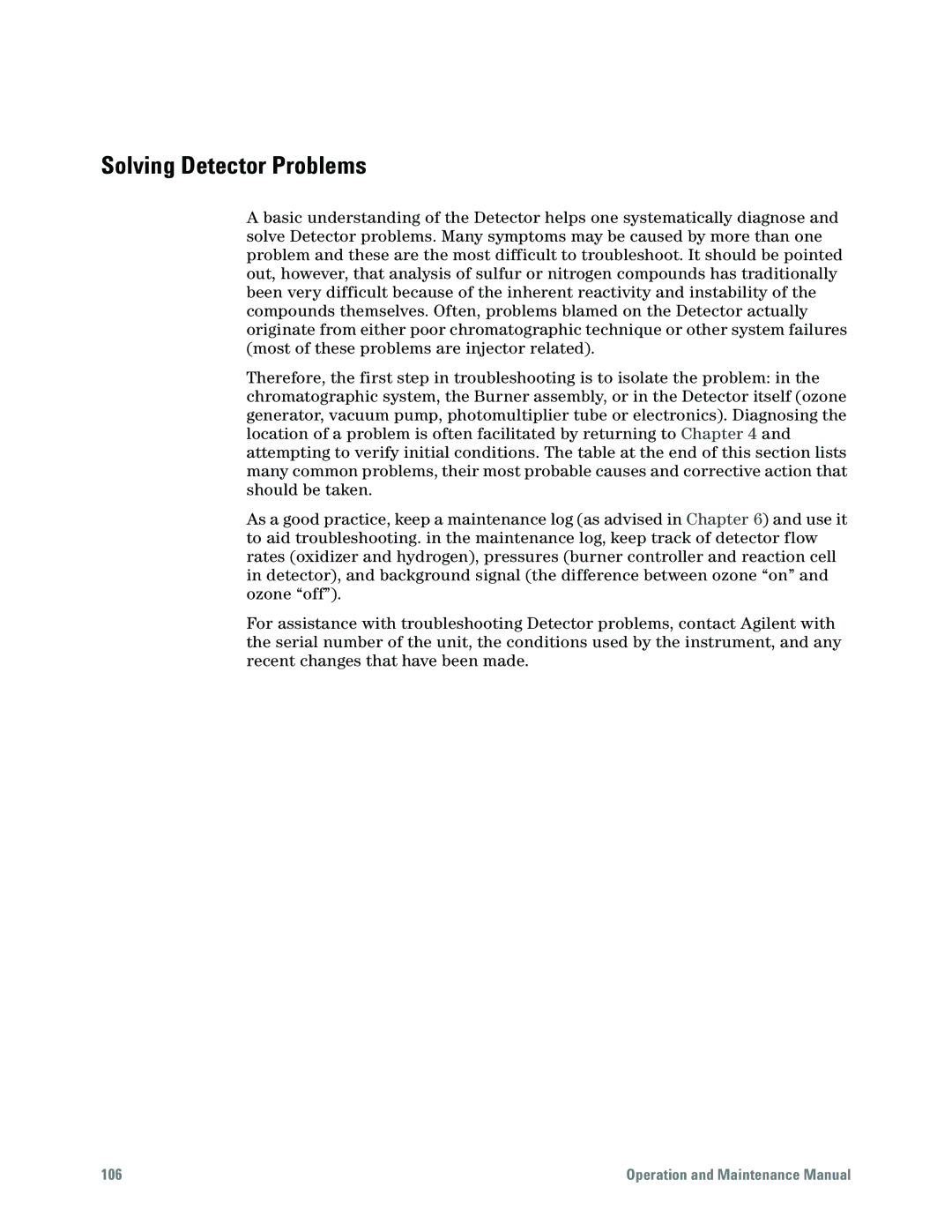Solving Detector Problems
A basic understanding of the Detector helps one systematically diagnose and solve Detector problems. Many symptoms may be caused by more than one problem and these are the most difficult to troubleshoot. It should be pointed out, however, that analysis of sulfur or nitrogen compounds has traditionally been very difficult because of the inherent reactivity and instability of the compounds themselves. Often, problems blamed on the Detector actually originate from either poor chromatographic technique or other system failures (most of these problems are injector related).
Therefore, the first step in troubleshooting is to isolate the problem: in the chromatographic system, the Burner assembly, or in the Detector itself (ozone generator, vacuum pump, photomultiplier tube or electronics). Diagnosing the location of a problem is often facilitated by returning to Chapter 4 and attempting to verify initial conditions. The table at the end of this section lists many common problems, their most probable causes and corrective action that should be taken.
As a good practice, keep a maintenance log (as advised in Chapter 6) and use it to aid troubleshooting. in the maintenance log, keep track of detector flow rates (oxidizer and hydrogen), pressures (burner controller and reaction cell in detector), and background signal (the difference between ozone “on” and ozone “off”).
For assistance with troubleshooting Detector problems, contact Agilent with the serial number of the unit, the conditions used by the instrument, and any recent changes that have been made.
106 | Operation and Maintenance Manual |
